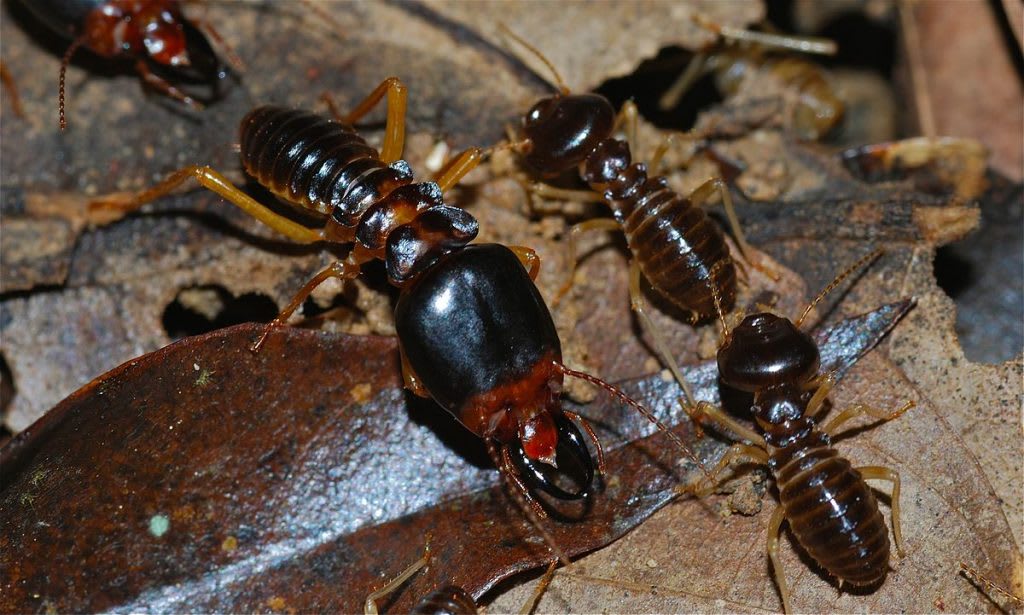
Things to Know About Termites:
Termites are among the most damaging insects in the world. They are little, wingless insects that are often confused with ants. Termites, while resembling their more well-known counterparts, are actually rather distinct.
- These insects are detritophagous and eusocial, feeding on decaying plant material such as wood, leaf litter, and soil humus.
- They are often referred to as "white ants" due to their moniliform antennae and soft-bodied, unpigmented worker caste, but are not closely associated with ants.
- There are around 2,972 extant species, including 2,105 belonging to the Termitidae family.
Please keep in mind that if you are unfamiliar with termites, they can destroy your home.
Keep reading to learn more about these insects.
How do termites chew wood for damage?
The organisms located in termites' stomachs allow them to live off cellulose. Bacteria and protozoa create a mutually advantageous connection with pests by creating a unique enzyme that naturally degrades cellulose.
They breakdown cellulose, and termites get their sustenance from sugar. Furthermore, certain termite species prefer wood that has already been broken down by fungi, which makes digesting easier.
Workers feed immature termites (those without bacteria and protozoa in their stomachs), soldiers, and reproductives. Worker termites pass on the cellulose-turned-sugar material by mouth-to-mouth feeding.

When bugs feed on timber structures in buildings, they cause problems for homeowners. Termites are social insects that often dwell in big colonies and target various types of wood depending on the species. In most cases, bug infestations go undetected until significant structural damage has occurred.
Another variety is known as drywood termites.
Drywood termites infest dry wood structures such as decks, fences, furniture, and structural parts of dwellings. Pests nest above ground and rarely come into contact with the soil.
Lumberyards and other places where they keep and sell wood might unintentionally transmit termite infestations to households. Drywood termites also attack utility poles. These termite species usually enter the house straight through attic vents or through openings.

What other things does termites eat except wood?
In addition to wood, termites eat plants, cardboard, paper, cloth, carpet, and insulation. They'll even chew books and cotton materials! The primary reason these social insects choose these materials is the presence of cellulose, which is easier to absorb and digest.
Termites commonly consume fruits, vegetables, and other plant materials. Termites require a steady supply of food to survive, hence they prefer various types of food sources. If you have a termite infestation in your home, you should be aware of where they come from and take precautions to safeguard your home from these insects.
While wood is the most typical nourishment source for termites, they are also drawn to other foodstuffs.
Plant cell walls include cellulose fibers, which are a primary component of wood. Other materials containing it in lower amounts include cardboard, plywood, particle board, paper, and fabric. As a result, termites can extract a large amount of vitamins and minerals from these substances.
Although some termites eat wood, certain species prefer alternate food sources. Eastern subterranean termites, for example, generally consume softwoods such as pine, whereas the Formosan termite favors hardwoods like oak.
As a result, the diet of a certain termite species varies based on the availability of food sources in its surroundings. This makes it incredibly difficult to eliminate them everywhere.
Are termites dangerous to people?
The quick answer is that termites are not dangerous to people, but they can inflict extensive damage to you when you touch it's head or teeth. Termites will hardly attack or bite a person. They are not poisonous, nor do they transmit diseases.
Though they do not directly endanger humans, their insatiable appetites can cause havoc in your house or workplace. If left unchecked, a termite infestation can ruin timber structures and cause major monetary losses.
If you believe you have a termite infestation, or you notice that they are destroying things in your house. You should contact a professional exterminator. With quick treatment, you can keep these harmful pests out of your property.
About the Creator
Gloria Penelope
Every creative piece is just me telling a story. Enjoy my creative writing!
Enjoyed the story? Support the Creator.
Subscribe for free to receive all their stories in your feed. You could also pledge your support or give them a one-off tip, letting them know you appreciate their work.






Comments
There are no comments for this story
Be the first to respond and start the conversation.